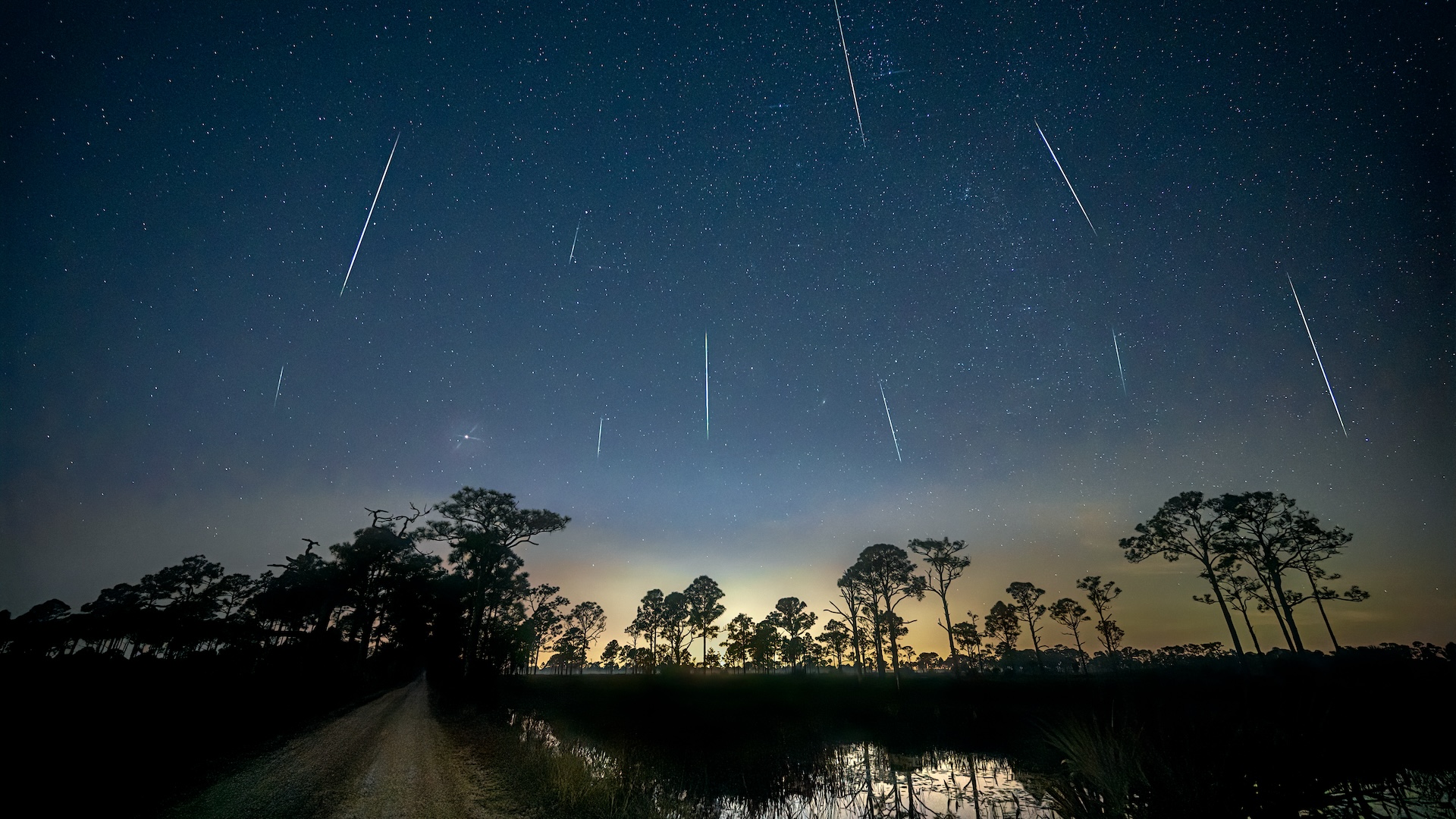Eta Aquariid meteor shower peaks tonight: How to see remnants of Halley's comet in the night sky
The annual Eta Aquariid meteor shower, linked to Halley's Comet, will peak overnight tonight (May 5 to 6).

The annual Eta Aquariid meteor shower (also called the Eta Aquariids or Eta Aquarids) will peak tonight and tomorrow (May 5-6), giving skywatchers a chance to see "shooting stars" in the night sky.
With the potential for up to 60 meteors per hour, it's an exciting prospect for anyone with dark and clear skies, though your location will make a big difference in what you'll see. However, this meteor shower has a broad peak, so it's possible to see shooting stars in the nights just before and after the peak.
According to EarthSky, viewers in the Southern Hemisphere and more southerly parts of the Northern Hemisphere, such as Southern U.S. states, will get the best views. That's because the Eta Aquariids appear to come from the constellation Aquarius, which is higher in the sky the farther south it's observed from this time of year. The exact "radiant point," as astronomers call it, is the star Eta Aquarii, according to Time and Date.
With up to 60 meteors per hour under perfect conditions during the peak night, the Eta Aquariids are considered a strong meteor shower, but only when viewed from the tropics and south of the equator. According to the American Meteor Society, between 10 and 30 meteors per hour are expected just before dawn for viewers north of the equator.
Related: How to photograph a meteor shower
The moon's brightness can greatly affect the chances of seeing faint meteors. On Tuesday (May 6), a 63%-illuminated waxing gibbous moon will set in the early hours, making the predawn hours the best time to watch for meteors. (May's full "Flower Moon" rises on the 12th).
From the northern U.S., Canada and Europe, the radiant will remain low on the horizon, limiting the number of visible meteors. Although that means fewer meteors, they may be seen as "Earthgrazers," — meteors with long trails behind them that seem to skim the horizon, according to NASA.
Get the world’s most fascinating discoveries delivered straight to your inbox.
The Eta Aquariids happen when Earth passes through dust and debris left behind in the inner solar system by Halley's Comet. As our planet moves through this stream of cosmic dust, tiny particles hit the atmosphere at speeds of about 40.7 miles per second (65.4 kilometers per second), according to the American Meteor Society. Halley's Comet, which was last in Earth's vicinity in 1986 and will return in 2061, is also responsible for the Orionid meteor shower, which will peak overnight on Oct. 20-21 this year.
Editor's note: This article was updated on May 5 to indicate the shower is about to peak.

Jamie Carter is a freelance journalist and regular Live Science contributor based in Cardiff, U.K. He is the author of A Stargazing Program For Beginners and lectures on astronomy and the natural world. Jamie regularly writes for Space.com, TechRadar.com, Forbes Science, BBC Wildlife magazine and Scientific American, and many others. He edits WhenIsTheNextEclipse.com.
You must confirm your public display name before commenting
Please logout and then login again, you will then be prompted to enter your display name.


